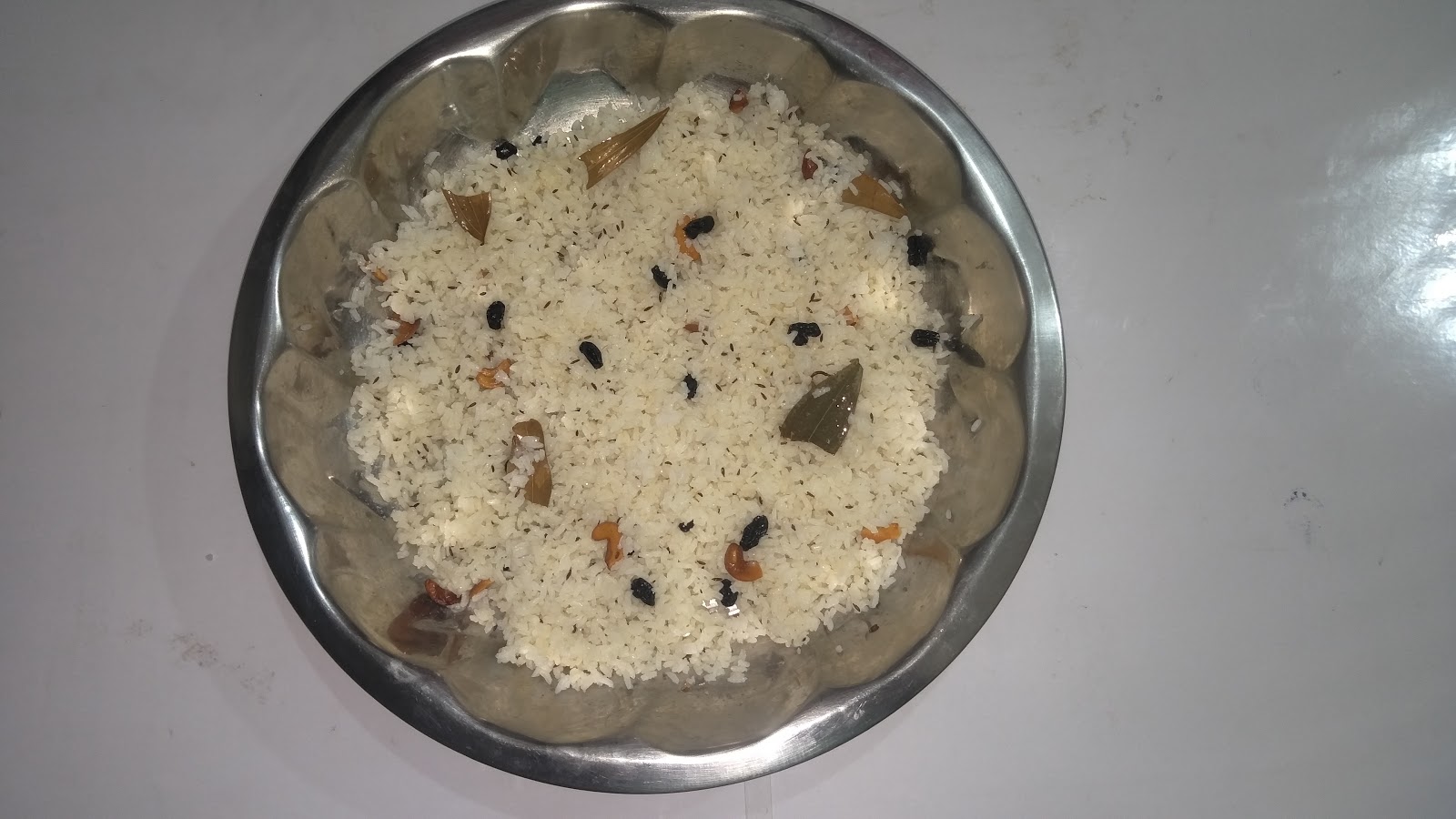Ghee Rice | Puri Jaganath Maha prasad
Offering to Divine
Ghia Anna or Ghee Rice, meaning rice made of clarified butter, is one of the 56 food items (chappan bhog), given as part of the mahaprasad to Bhagavan Jagannath at the Shree Jagannath temple in Puri, located in the state of Odisha in India.
Introduction
About this Recipe
Ghia Anna or Ghee Rice, meaning rice made of clarified butter, is one of the 56 food items (chappan bhog), given as part of the mahaprasad to Bhagavan Jagannath at the Shree Jagannath temple in Puri, located in the state of Odisha in India. The temple at Puri is the only one in India where Bhagavan Krishna along with brother Balarama and sister Subhadra reside as Jagannath, Balabhadra and Subhadra, respectively. Lord Krishna is the 8th avatar of Bhagavan Vishnu and the temple at Puri is one of the char dham (four abodes) of Hinduism. Hindus go on a pilgrimage to these four abodes to get moksha or liberation from the cycle of life and death. The four sites in the Indian subcontinent being Badrinath, Dwaraka, Rameshwaram and Puri. It is said that Bhagavan Vishnu takes bath in Rameshwaram, meditates in Badrinath, dines at Puri and retires in Dwaraka. Hence the temple food or mahaprasad at Puri is held to be of supreme importance.

Of all naivedyam offered at different temples across India, the greatest spread of naivedyam or bhog to God is that of Lord Krishna i.e Lord Jagannath, of 56 (chappan) items of food. This is offered daily and is called mahabhog and when distributed to devotees becomes mahaprasad.
The story behind chappan bhog goes somewhat like this:
In order to protect his village from the wrath of the Rain God Indra, the boy Krishna lifted Govardhan parvat and placed it on the tip of his little finger. He sheltered everyone from his village under the parvat. He stood holding the mountain for 7 days until Lord Indra realized his mistake and stopped the rains and floods.
Krishna used to eat 8 food items daily. But during these 7 days, he didn’t consume anything. At the end of the seventh day, people made 56 (8*7) dishes for Lord Krishna.
Even today, every single day, 56 items are prepared in the kitchen of Jagannath Temple, Puri. There are six sets of offerings made throughout different meal hours.
Constituents of the Mahaprasad
The mahaprasad is of two types – the sankudi mahaprasad and the Sukhila mahaprasad. The sakundi mahaprasad consists of items like rice, ghee rice, mixed rice, mixed curries of different kinds etc. The sukhila mahaprasad consists of dry sweetmeats. There is also a dry mahaprasad which is known as Nirmalaya which includes components and divine accompaniments taken out of the lord like flowers, sandal paste, garlands, etc.
A key aspect of the mahaprasad is that they are prepared only in earthen pots and cooked using the traditional vedic method of firewood cooking.
Ghee rice is one of the 56 items and forms part of the sakundi mahaprasad. This dish is also called mandira randha ghia anna or temple cooked ghee rice where mandira means temple, randha means cooked, ghia means ghee and anna means rice.
“ALWAYS EAT ONLY CONSECRATED FOOD; PRASADA.
EAT ONLY ONCE A DAY. MAKE IT AS A LIFESTYLE.
EAT KANCHIPURAM IDLI. I CAN GIVE 25 SACRED
FOOD OFFERINGS – KANCHIPURAM IDLY,
MELAKOTTAI PULIYOTHARAI,
SRIVILLIPUTTUR AKKARAVADISAL, TIRUPATI LADOO,
JAGANNATH MAHAPRASADA. HAVE THE RECIPES FOR ALL THIS.
OFFER ANY ONE OF THIS EVERYDAY TO THE DEITY AND
EAT ONLY ONCE A DAY.
THESE ARE ALL AMAZING TRADITIONAL FOOD RECIPES!”
– SPH JGM Nithyananda Paramasivam
- Preparation time: 5 minutes
- Rice Cooking time: 25-30 minutes
- Seasoning time: 5 mins
- Total time: 35-40 minutes
- Servings : 10 servings
- Course: Main course, offered as mahaprasad to Lord Jagannath
- Cuisine: Oriya dish
Ingredients
- Rice – 250 gms
- Water – 800 ml
- Bay leaves 2-3
- Cashew nuts – 10 gms
- Raisins – 10 gm
- Ghee- 150 ml
- Jeera or Cumin Seeds – 5 gms
- Lemon juice – 10 ml
- Salt – ½ teaspoon
Bhaga Shastra gives ingredient measurements in measurement systems used in the olden days. Hence please use the conversion guidelines below to convert it into modern measurement systems. When giving this recipe, we are not rounding any measurements in the modern units, so as to avoid any deviations from the Bhaga shastra.
Bhaga Shastra Units Conversion
1 Padi – 1500 gms or 1.5 kgs approx.
1 Palam – 35 gms approx.
1 R.e (Rupee Equivalent) – 4.8 gms approx
Cooking Method
- Transfer water into a pot and bring to boil. Meanwhile, also wash the rice.
- When the water boils, add the washed rice and close with a lid to allow the rice to get cooked. After a few minutes of adding the rice, you see because of closed cooking, the steam pushes the lid outside.
- Remove the lid and allow the rice to get cooked in open.
- Once the rice is cooked, it is time to drain the excess water and transfer the rice to a clean plate.
- After transferring the rice, let it cool for a few minutes. Then add salt and mix well
- Heat a pan and add ghee to it once hot.
- Once the ghee is hot, add bay leaves and the cumin seeds.
- Fry the cumin seeds for a minute. Once the seeds splutter, add the cashew nuts and raisins and fry them.
- Switch off the flame and add this seasoning to the rice. Gently mix so as to not break the rice grains.
- Add the lemon juice to the rice and mix well and serve fresh.
Step by step instructions
1
Transfer water into a pot and bring to boil.
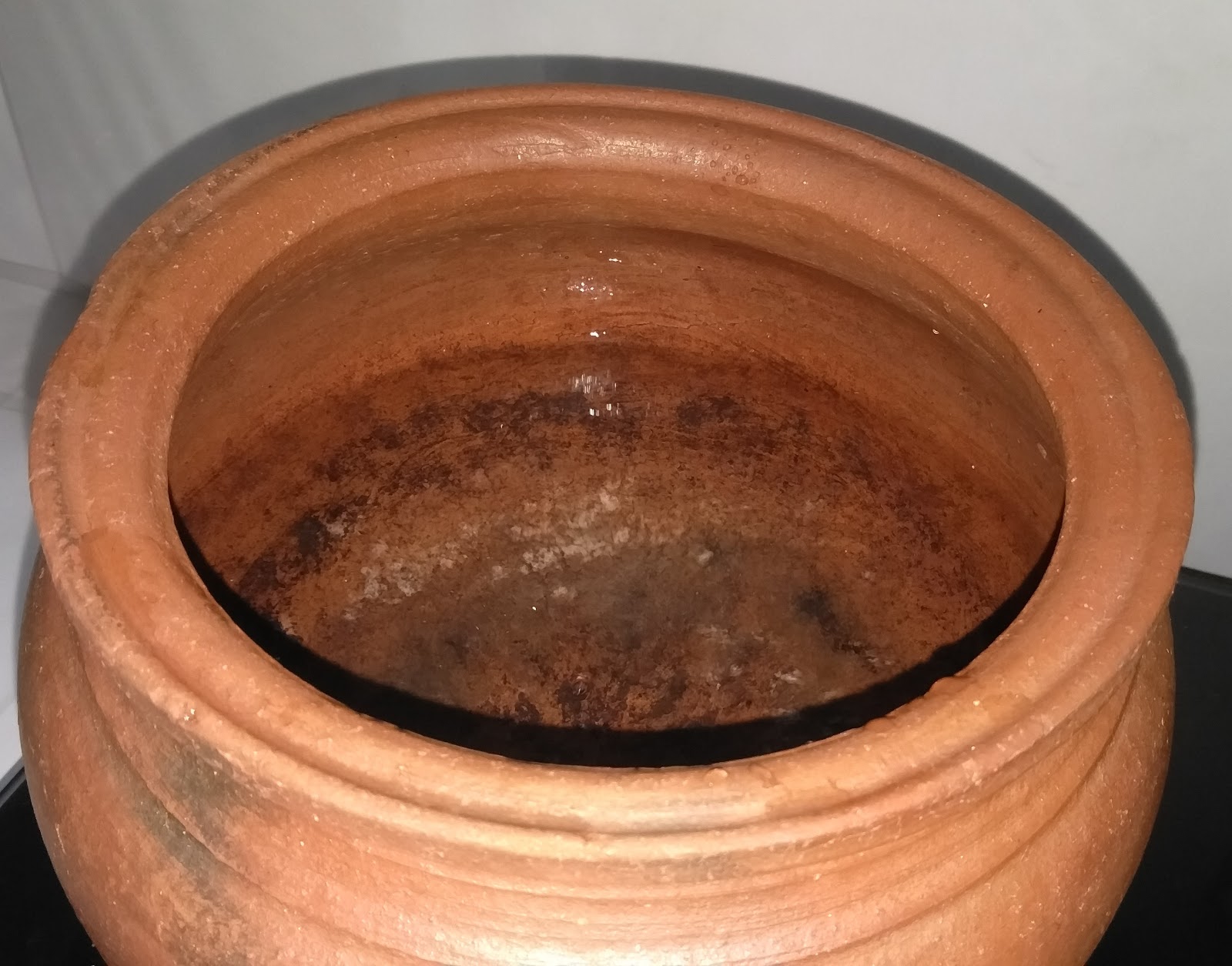
2
Meanwhile, also wash the rice. When the water boils, add the washed rice and cook the rice.
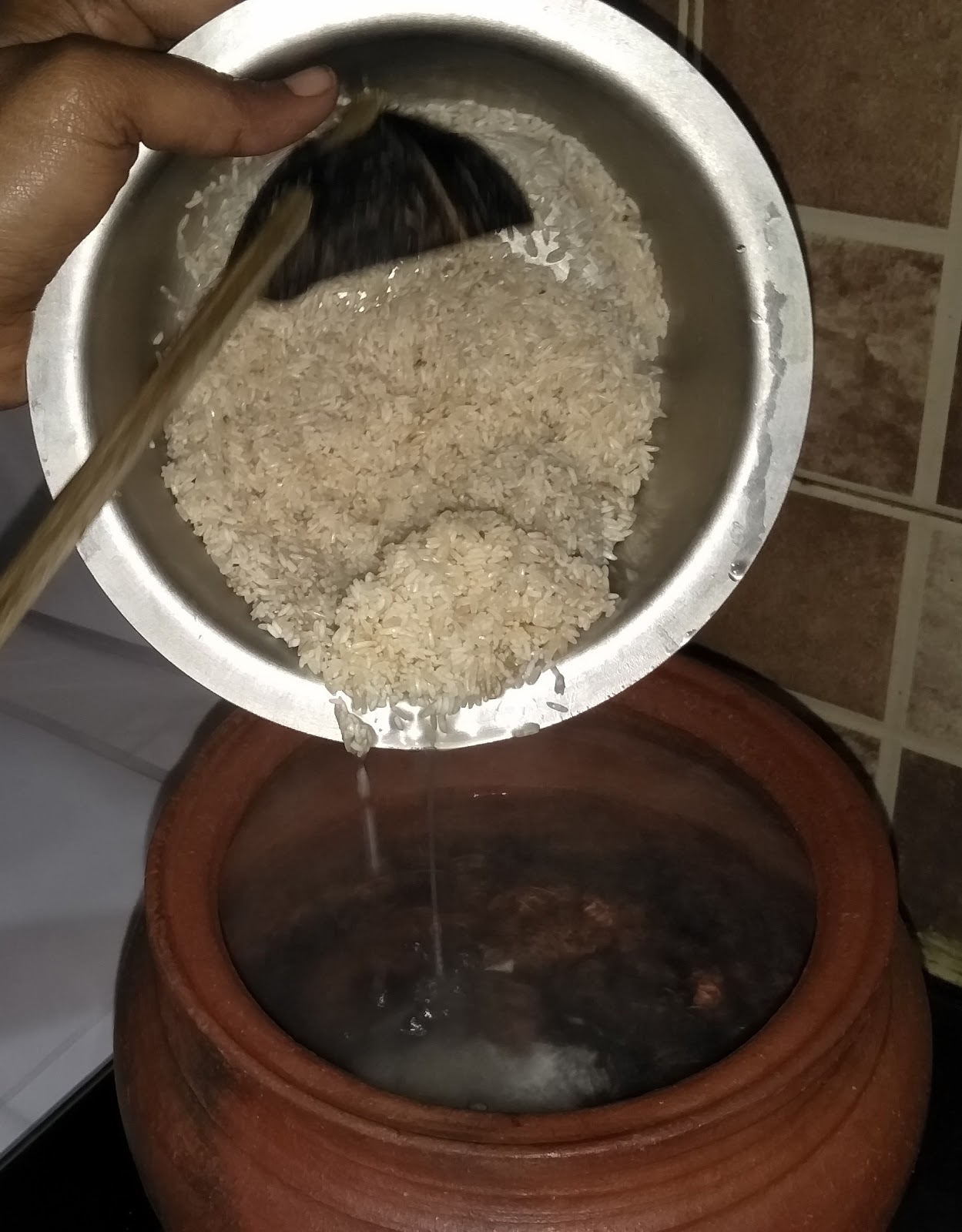
3
Remove the lid and allow the rice to get cooked in open.
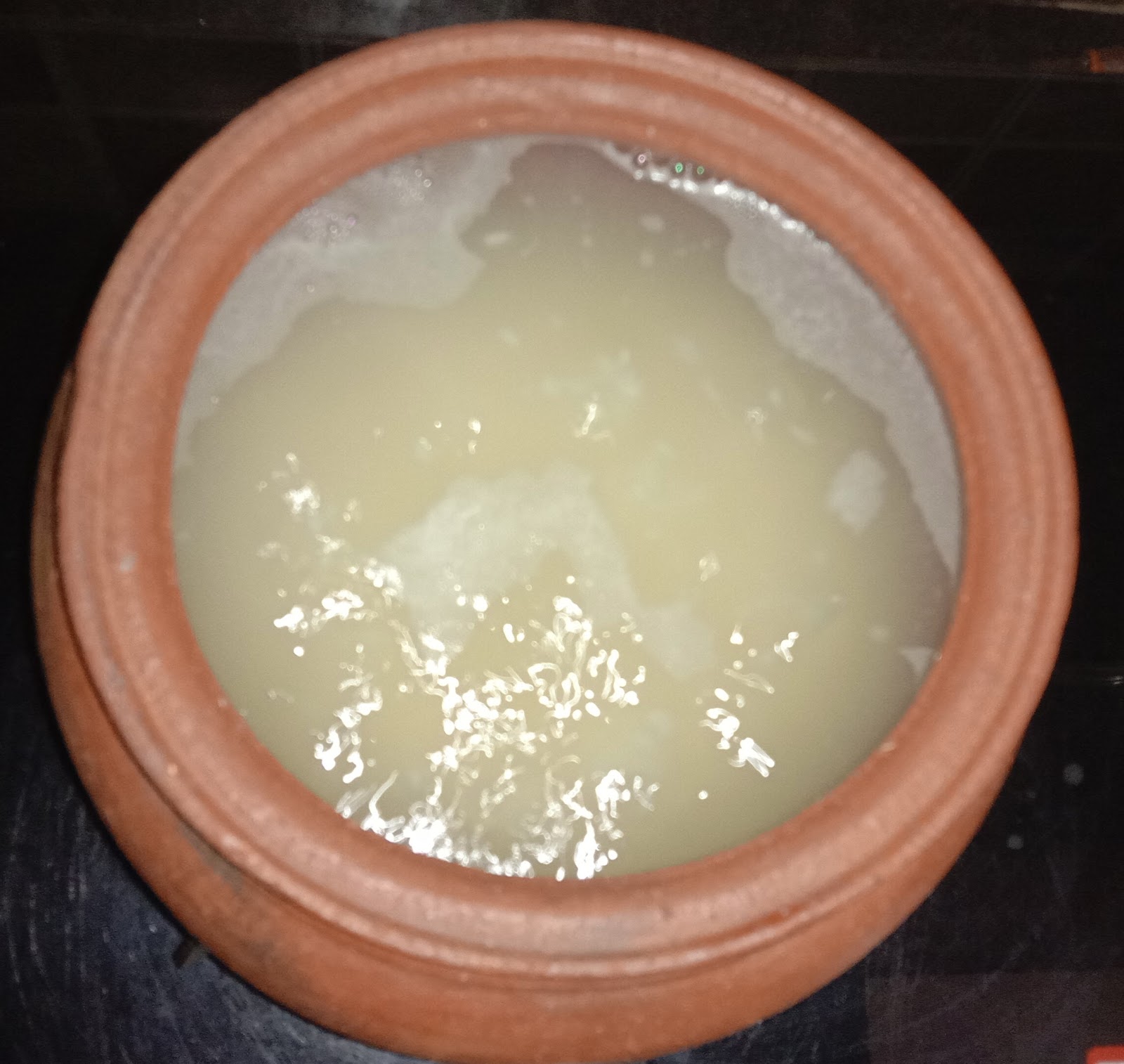
4
Once the rice is cooked, it is time to drain the excess water.
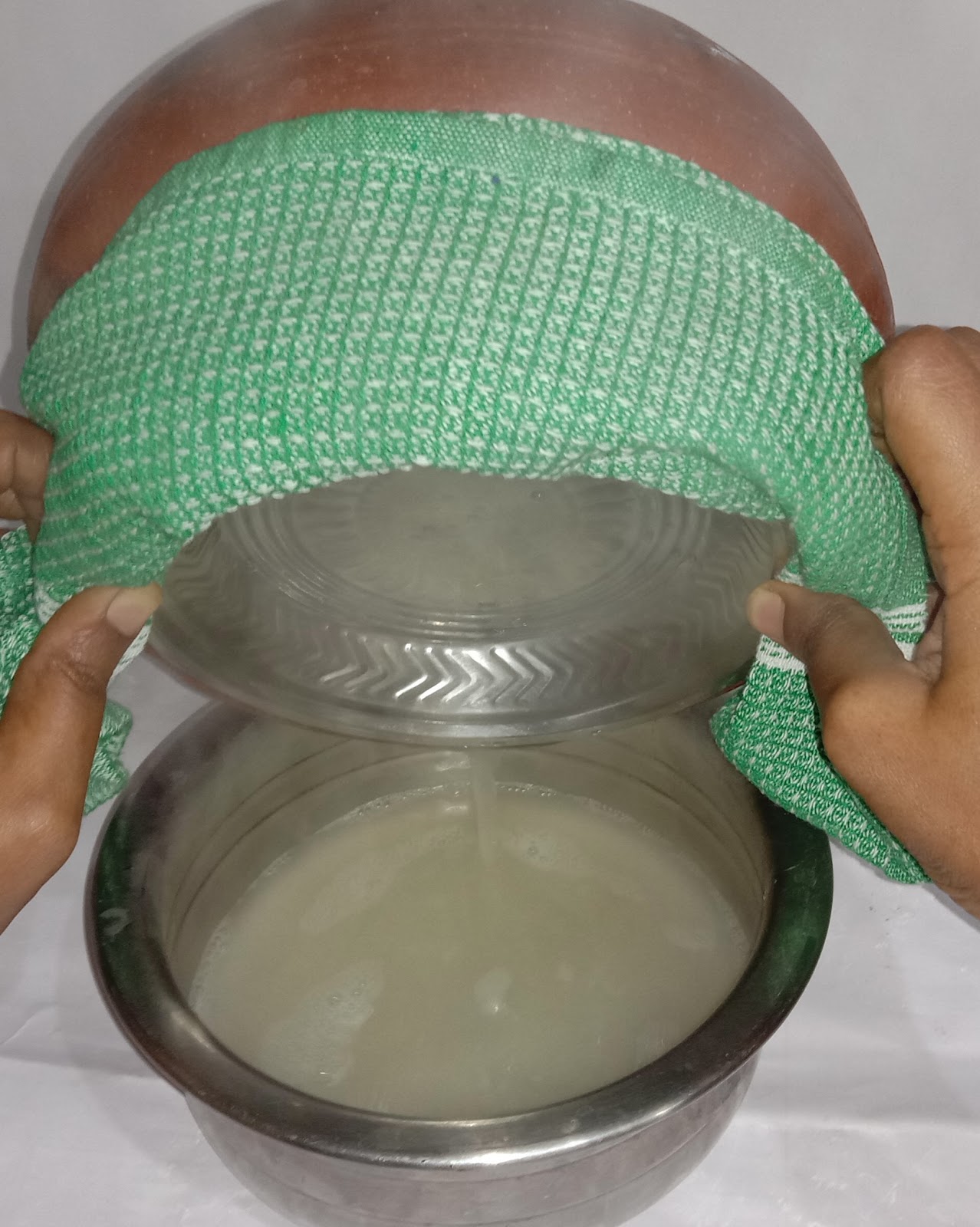
5
Transfer the rice to a clean plate.

6
After transferring the rice, let it cool for a few minutes. Then add salt and mix well.
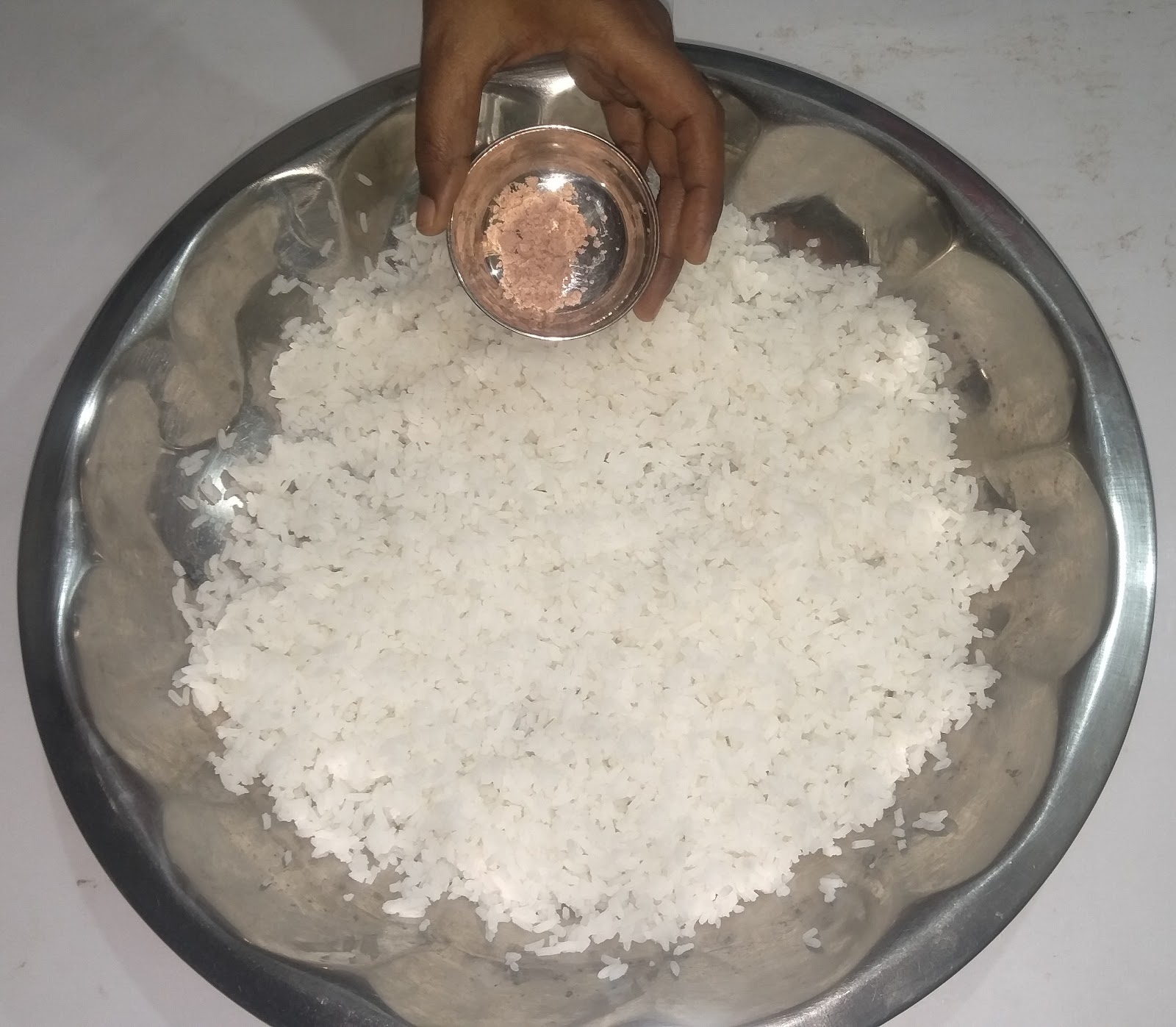
7
After adding the salt, mix the rice gently till it is fully coated with the salt.

8
Heat a pan and add ghee to it once hot.

9
Once the ghee is hot, add bay leaves and the cumin seeds.

10
Fry the cumin seeds for a minute. Once the seeds splutter, add the cashew nuts and raisins and fry them.
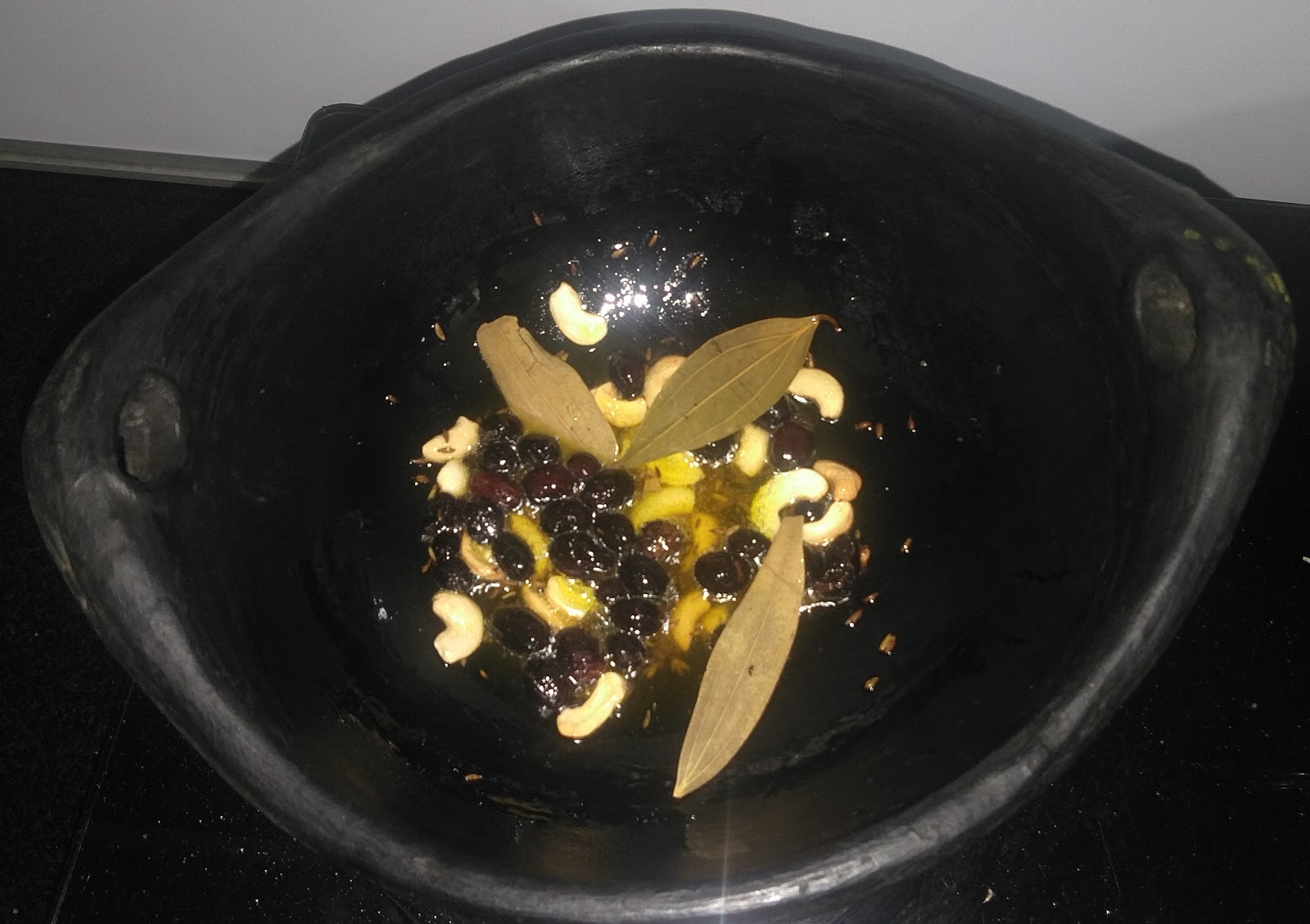
11
Switch off the flame and add this seasoning to the rice. Gently mix so as to not break the rice grains.
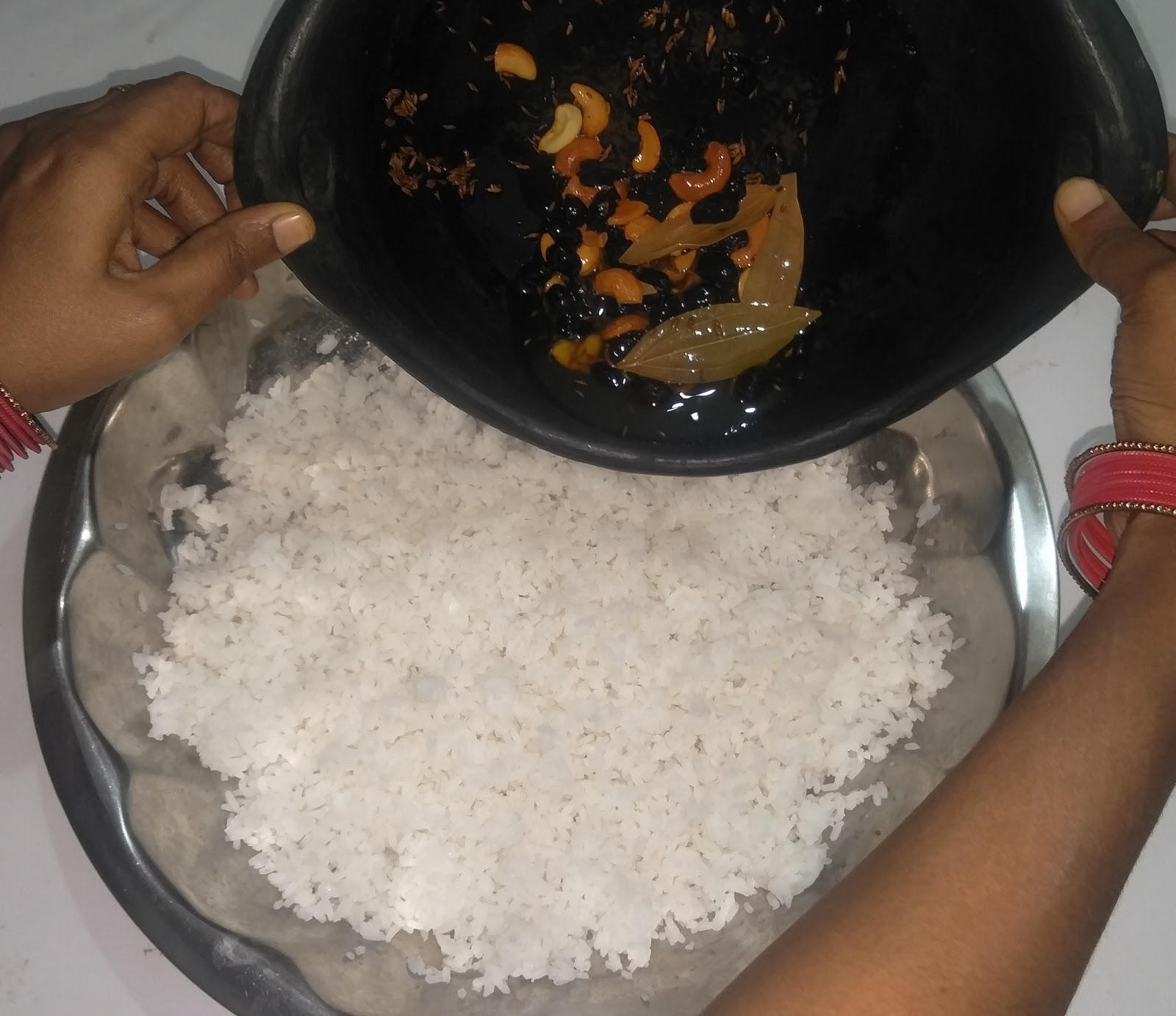
12
Add the lemon juice to the rice and mix well and serve fresh.

13
The dish is now ready to be served as naivedyam to the deity.
